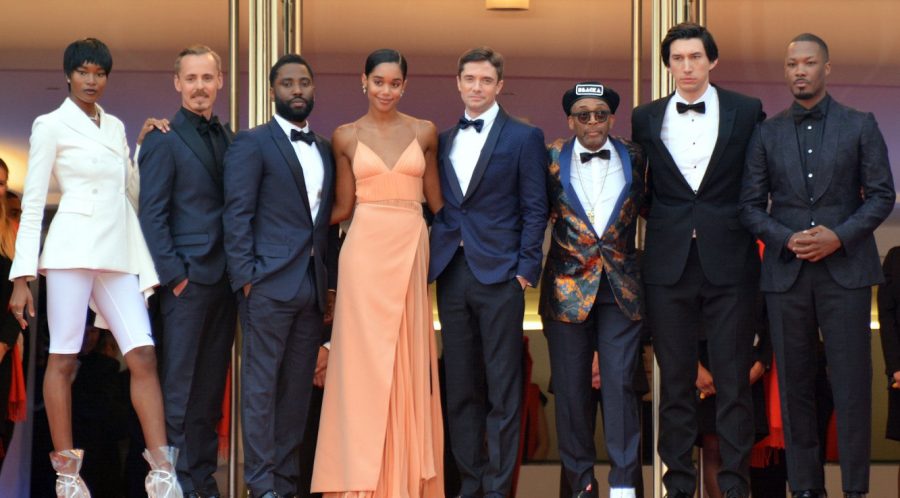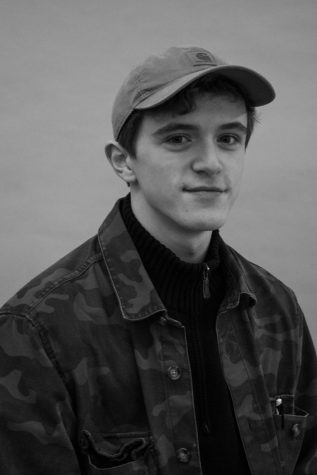“BlackKKlansman”: A 1970s Depiction of Racism, Reflective of 2018
“BlackKKlansman,” directed by Spike Lee, was released on August 10th, 2018.
August 11, 2018
Throughout his decades-spanning career, Spike Lee has always remained an activist first and a filmmaker second. He uses his movies as catalysts for what he wants to say, consistently making movies with strong, timely messages. In BlackKKlansman, Lee returns to a form that hasn’t been seen since trash cans flew through windows in his 1989 film Do The Right Thing. He tears into modern politics by showing how injustice has carried through the years. Empowered and inspired by the events of our most recent presidential election, he presents a story from the past to offer a powerful commentary on race in the modern world.
The movie takes place in early 1970s Colorado Springs, Ron Stallworth (John David Washington) is the first black cop in the predominantly white city’s entire history. His appearance is striking, with a perfectly round and kempt afro atop his head. His interview goes well, and he gets a job shoved away in the annex, hidden behind shelves of files, getting more and more angry at the name calling and further racist treatment he receives even from his coworkers. Finally, Stallworth gets an actual assignment to go to a Black Student Union meeting and monitor the words of famed orator Kwame Ture (Corey Hawkins) as he speaks on the discrimination and hatred he faces as a black man. Ture, born Stokely Carmichael, created the Black Power movement. In the movie, Ture especially speaks on the violence committed by the cops, who he deems to be “pigs.” This starts an early conflict with our protagonist as he struggles having a profession so often associated with violence against his own race. The only shots in this scene are up close with Ture and his words while black faces are silhouetted on the backdrop. Lee’s direction is intentional as it seems Mr. Ture is speaking directly to the audience. This is a deliberate move to make sure the audience is aware these problems aren’t held inside the story, but seep into reality as well.
Another of the tasks Stallworth does as a police officer is to comb through local papers to try to find anything that could be of use. While scanning through an inconspicuous local column, he comes across an ad: “KU KLUX KLAN”, advertised right under the sports section. This discovery kicks off the rest of the film. This white supremacist organization is allowed to place an ad in the newspaper to recruit new members. Lee’s placement of the image in the paper was so impactful it seemed just as harsh as seeing a billboard up with the same text. But Ron Stallworth isn’t exactly the type to give up easily on anything, so he personally calls that number and introduces himself as a racist, homophobic, anti semitic white man to infiltrate the ranks of their “Organization.” Stallworth’s inner conflict returns here as he realizes that some of his fellow officers act just as David Duke (Topher Grace), grand wizard of the KKK, does, though they may not be members of the KKK. This fuels Ture’s ideology that the police are violent, racist bigots.
With the help of fellow detective, Stallworth creates two Ron Stallworths, playing himself over the phone, and detective ‘Flip’ Zimmerman (Adam Driver) goes undercover as Stallworth to play the white man needed to assert himself in the Klan. The lie goes far as that eventually the black Stallworth finds himself getting pretty chummy over the phone with Duke. During one of their conversations, Duke comments “Do you know how I know you’re a white man and not a black rat?” Stallworth humors him and asks “How do you know?” Duke’s response claims the way he pronounces certains words tipped him off to his true white heritage, and when we cut back to Stallworth at his desk, he’s hysterically laughing, obviously amused with the blinding disconnect in Duke’s prejudices and the truth.
One of the first things shown on screen here is the line “Dis joint is based on some fo’ real, fo’ real sh*t.” What you see in this movie is a true story, with a conservative amount of artistic license to preserve the facts. Stallworth’s inner struggle with his career, his race, and the destructive reality of racism, is one that certainly persists today. But people coming in to watch a movie don’t really take into account when something’s based on the real world or not, they still have that barrier between what’s depicted on screen and reality. Spike Lee knows this, and he also knew that he wanted to make his message bluntly transparent. As the screen fades away from a burning cross, it starts again with newsreel, showing real burning crosses set ablaze in 2018. That’s today. In the almost 50 years between the hateful past you just witnessed and the present, nothing has changed.










